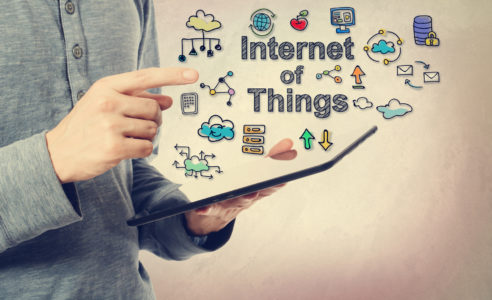The world is always evolving and as such lot of technological advancements are on the rise. One of such advancements is the ‘internet of things’’ or IoT as it is called. So basically, the internet of things simply put, involves the extension of internet connectivity to everyday objects as well as physical devices. Simply put, the internet of things , is a connection of smart devices.

The concept of the internet of things.
The Internet of things is already influencing our lifestyles, from how we behave to how we react. There continues to be an ever-evolving definition of the internet of things due to the consolidation of multiple technologies, such as machine learning, real-time analytics commodity sensors and embedded systems.
Take, for example, we have our air conditioner connected to our smartphones and easily control the air conditioner with our smartphones, also we have smartwatches that we can use to track our daily activities. I can also be seen in navigation systems in our smart cars providing shorter routes to various locations.
Simply put, the Internet of things is a giant network that connects devices, and these devices also have the ability to gather and share information on how they work and also the various environments in which they work and operate. These devices are able to gather and share information, due to the fact that they possess censors.
Most modern devices have sensors embedded in them. Such devices range from our phones to household appliances, computers, vehicles, even the traffic light is not left out. These sensors are contained in almost everything we come across as we go about our daily activities.
Censors have the capacity to emit data about the condition of the device they operate in. The question you might want to ask is how these sensors are able to share the data and how can these data be of help to us. This is where IoT comes in, it provides a platform that enables devices to deposit their data, not only provides a platform, it also helps unify the deposited data into a common language that allows all the connected devices to communicate with each other.
When data from devices are deposited, IOT analyses this data and after analysis id did on the data, valuable information is extracted and the result is shared with other devices. The shared results create a better user experience automation and to also help other devices improve efficiently where necessary.
For example, you get a car you have various censors and as you continue to drive, the censors in the car continue to gather and share data, that’s why when any part of the car is faulty the censor in that area is able to transmit to the check engine notification on the dashboard. Information from the sensor is sent to the diagnostic box in the car which in turn sends the information to a gateway in the car.
The gateway, in turn, sends information to the manufacturer’s platform. The car gateway is able to send such information to the manufacture’s platform in a secured manner,Information from other similar cars.
There is what is known as the Asset management system which takes a record of all the manufacturers ‘ cars on the road, as well as available parts in their various warehouses.
As data continues to be shared, the manufacturer gets a notification of the car’s problem and the platform is able to automatically schedule an appointment to service the car, and also provides directions to the nearest dealership and so on. The platform ensures that the dealership gets proper notification about the car and all that would be needed.
It continues down to the manufactures checking a number of cars that have had similar problems if they were produced within the same factory and help the manufacturer improve designs and functions in future products as well. This just a summary of how the Internet of things works.

 Health5 years ago
Health5 years ago
 Health5 years ago
Health5 years ago
 Health5 years ago
Health5 years ago
 Health5 years ago
Health5 years ago
 Health5 years ago
Health5 years ago
 Food4 years ago
Food4 years ago
 Health3 years ago
Health3 years ago
 Entertainment6 years ago
Entertainment6 years ago
